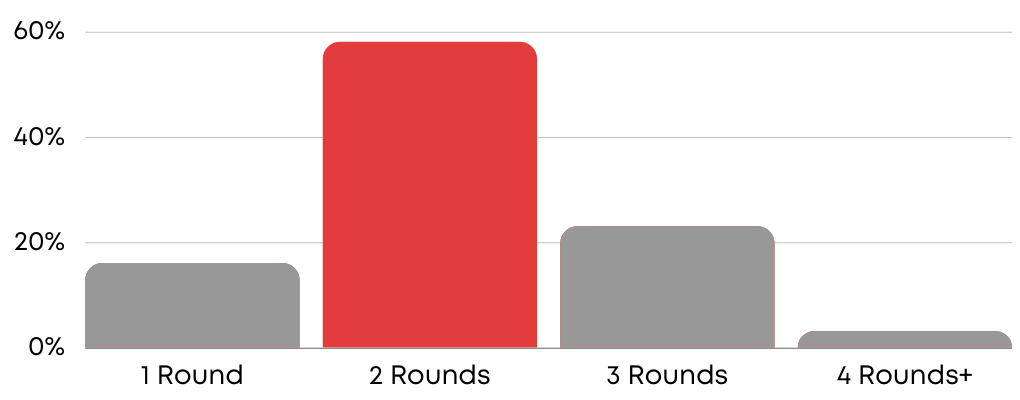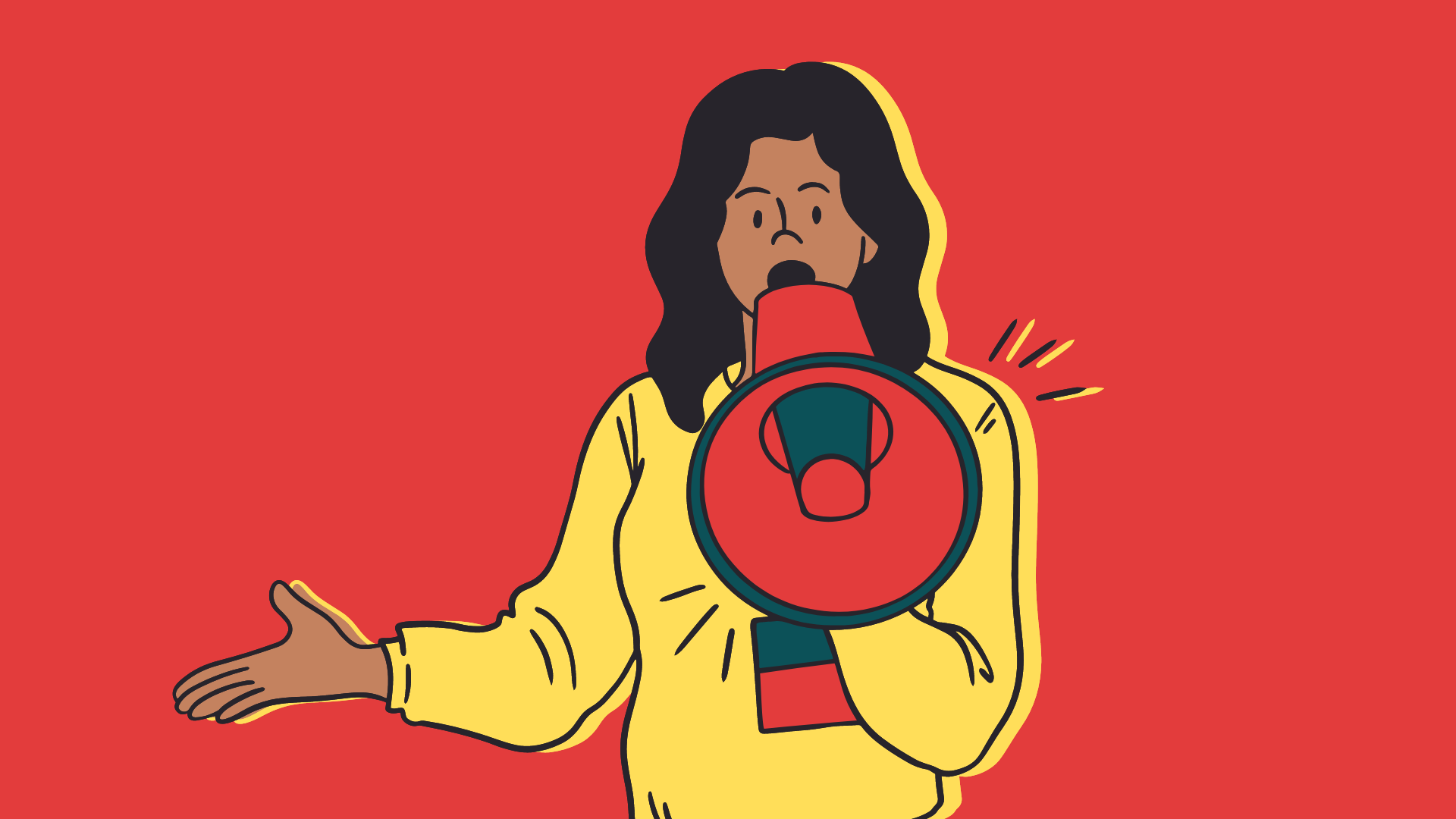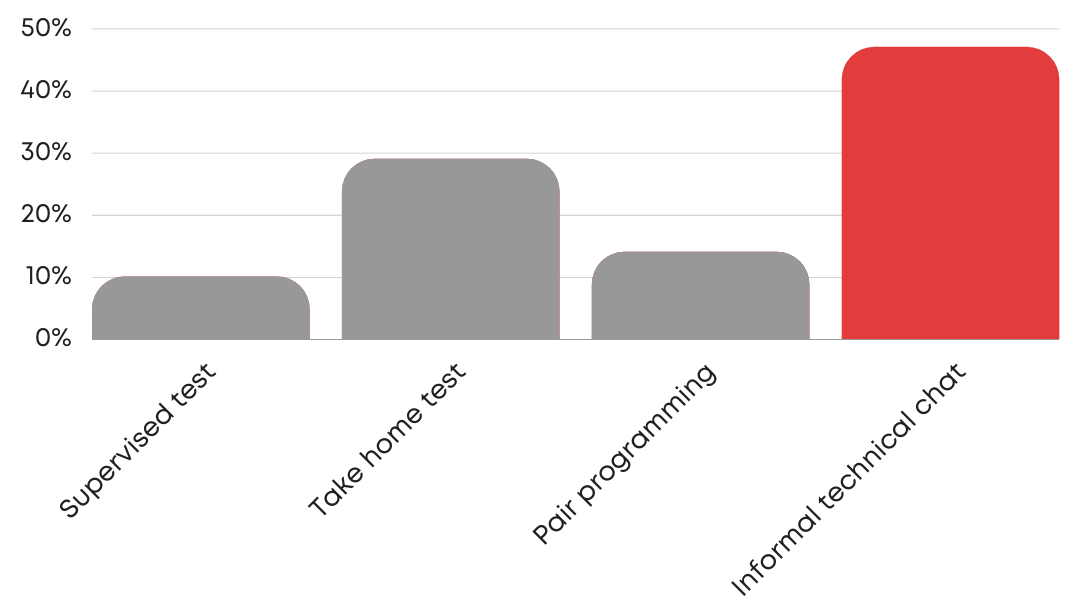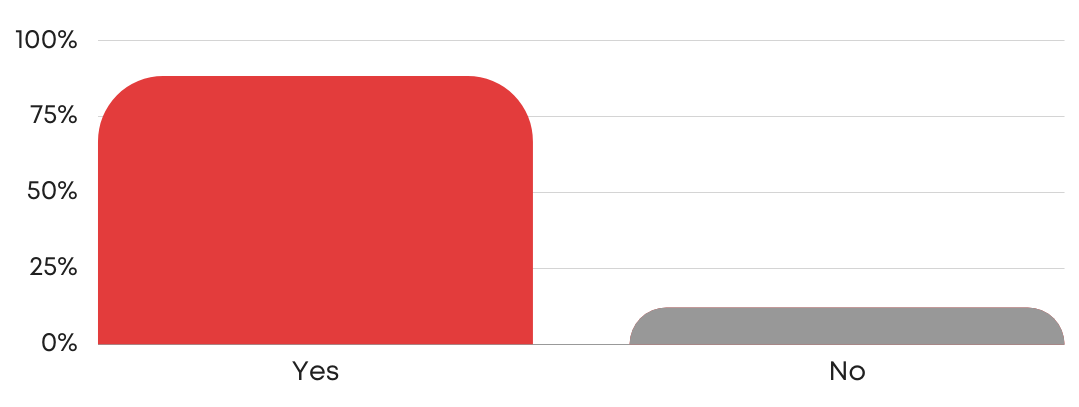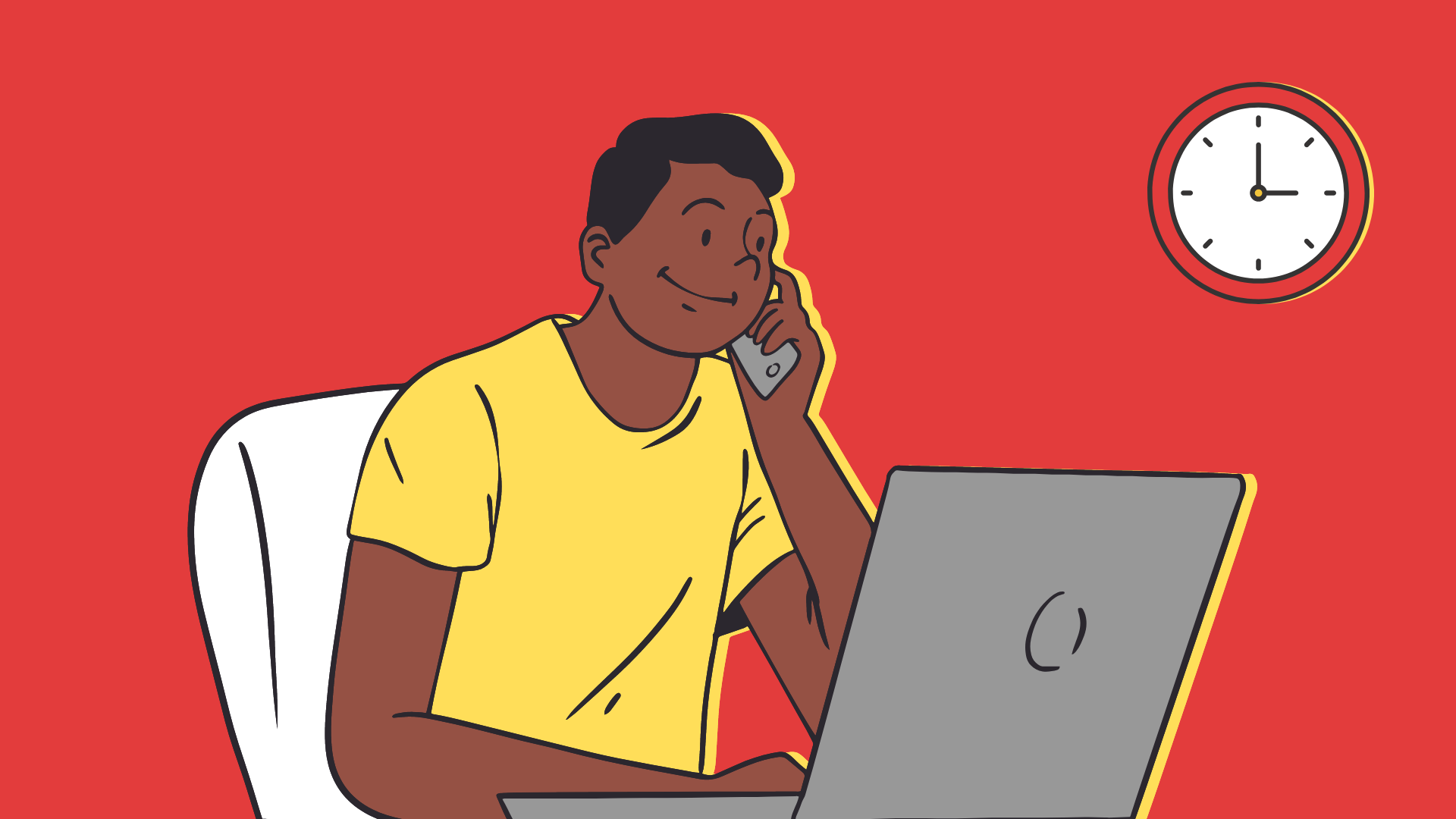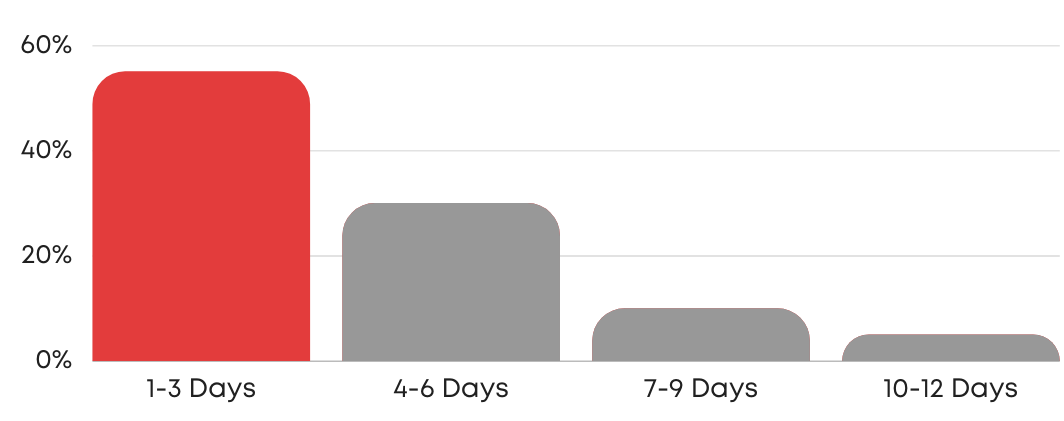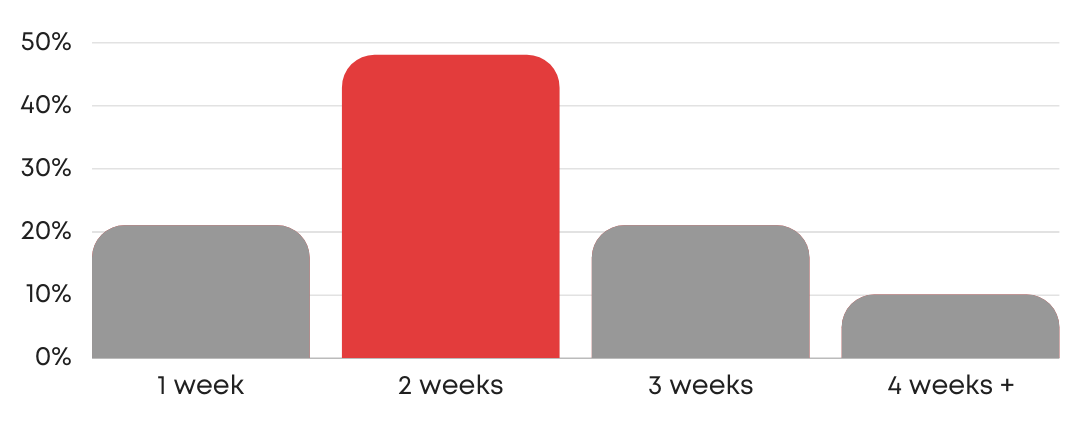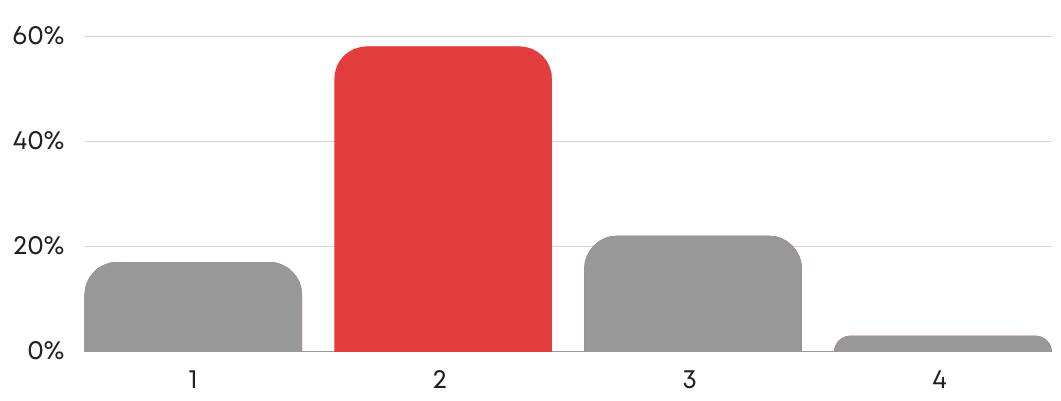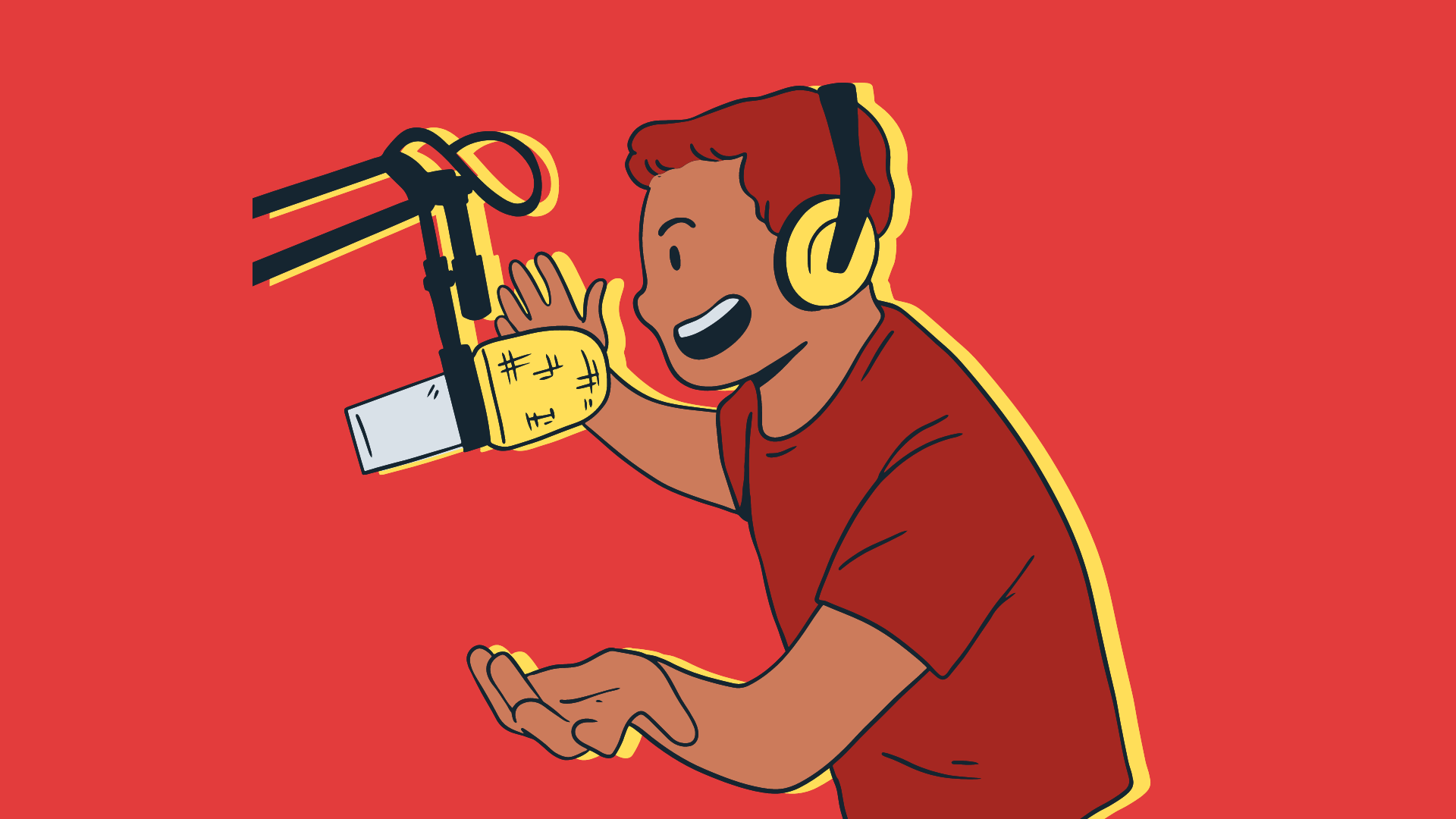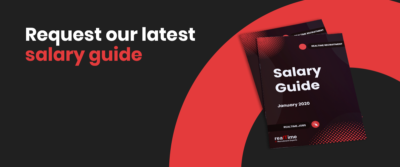Which technical test is best?
North Carolina State University and Microsoft [6] have conducted research into technical testing, comparing private interviews and supervised tests. They found that those who took the supervised test performed 50% worse than those completing a private test. Their study suggests that well-qualified candidates were eliminated because they were assessed on performance anxiety rather than coding abilities.
From our own experience we agree. When speaking with candidates, many prefer private tests and informal technical questions because they are less invasive and stressful. Our LinkedIn poll also supports this, whereby 47% of candidates favoured an informal technical chat and 29% a take home test. Also 89% of candidates felt supervised technical tests are affected by performance anxiety.
Furthermore, Live coding challenges are often feared because they create a highly stressful environment whereby the candidate is watched, questioned and judged whilst coding. Stress can have disruptive effects on the memory which can negatively affect a candidate’s performance. [7] So bear this in mind if this is your preferred method.
Every role is different and what works best for one may not be optimal for another. Junior or mid-level roles may benefit from a private test where raw technical ability is tested. Senior candidates who may take on managerial responsibilities may benefit from a higher stress test. However, some senior candidates dislike technical testing so informational technical questions may be preferred. They may be passive candidates and it may dissuade them from engaging.
The style of questions is important for finding the right candidate. Real-world scenarios that you expect the candidate to face in their new role will allow you to assess accurately. Pair programming with future colleagues will determine how the candidate can work with their future team. Having others in the group could also mitigate stress because it creates a more natural environment. [7]
Overall, we suggest private tests, informal technical questions and pair programming are the best technical interview options. The best method will depend on the role and the type of candidate you’re searching for


